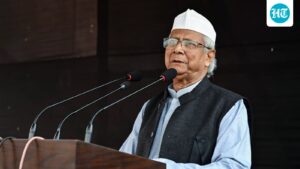
A Binghamton University researcher has been awarded over $870,000 in grant funding to advance her pioneering study in neuroengineering technologies aimed at treating spinal cord injuries. Assistant Professor Siyuan Rao, a faculty member at the Thomas J. Watson College of Engineering and Applied Science’s Department of Biomedical Engineering, is spearheading efforts to develop improved methods for monitoring and recovering from these debilitating injuries, which impact more than 15 million people globally.
Rao’s research is a collaborative effort with prestigious institutions such as Boston Children’s Hospital and Harvard Medical School. “My colleagues and I are honored that our work is being recognized and supported by these grants, which will allow us to advance innovative bioelectronic technologies to better understand and promote recovery after spinal cord injuries,” Rao stated.
Breakthroughs in Neuroengineering
The funding includes a significant $400,000 grant from the Craig H. Neilsen Foundation, which aims to leverage recent advancements in neural probes. These probes, incorporating conductive carbon nanotubes, are designed to monitor nerve activity effectively. When integrated into bioelectronic devices, the hydrogel technology developed by Rao’s team enables the recording of electrical signals from spinal cord neurons and leg muscles in mice.
The Craig H. Neilsen Foundation’s Spinal Cord Injury Research on the Translational Spectrum (SCIRTS) Pilot Grant supports the work of junior faculty, fostering new breakthroughs in the field.
Rao and her collaborators are particularly focused on identifying medications that could promote functional recovery following spinal cord injuries. This research is part of a broader initiative to translate scientific discoveries into practical therapeutic applications.
Exploring “Spinal Shock” with NIH Support
In addition to the Neilsen Foundation grant, the National Institutes of Health (NIH) has awarded Rao $470,293. This funding is intended for the use of multifunctional hydrogel neural probes to gain a deeper understanding of “spinal shock,” a temporary loss of all neurological function below a spinal cord injury. The NIH grant is part of its R21 program, which is designed to fund exploratory, high-risk/high-reward research projects.
Rao’s innovative approach and the potential impact of her work have garnered attention and support from several high-profile funding bodies. Her research not only seeks to unravel the complexities of spinal cord injuries but also aims to set the stage for future therapeutic interventions.
Building a Legacy of Research Excellence
Rao joined Binghamton University in the fall of 2023, bringing with her a National Science Foundation CAREER Award. This prestigious award supports early-career faculty who have the potential to become academic role models in both research and education. Her move to Binghamton was part of a $6.5 million SUNY initiative aimed at expanding faculty research in key areas.
To further advance her work, Rao recently secured an S.H. Ho Foundation Research Grant for Health Sciences and Technology. This grant was awarded in collaboration with Assistant Professors Qianbin Wang from the Biomedical Engineering department and Wenfeng Zhao from the Department of Electrical and Computer Engineering.
“The support from these grants is crucial for pushing the boundaries of what we know about spinal cord injuries and developing new technologies that can facilitate recovery,” Rao emphasized.
Implications and Future Directions
The implications of Rao’s research extend far beyond the laboratory. By enhancing our understanding of spinal cord injuries and developing innovative tools for treatment, her work holds the promise of improving the quality of life for millions of individuals affected by these injuries worldwide.
As Rao and her team continue their groundbreaking research, the scientific community and affected individuals alike are watching closely. The potential for new therapies and interventions offers hope for those living with spinal cord injuries, and the ongoing support from prominent funding bodies underscores the importance and potential impact of this work.
The next steps for Rao’s research will involve further testing and refinement of the hydrogel neural probes, as well as continued collaboration with her partners at Boston Children’s Hospital and Harvard Medical School. As the research progresses, it may pave the way for clinical trials and, ultimately, new treatment paradigms for spinal cord injuries.







